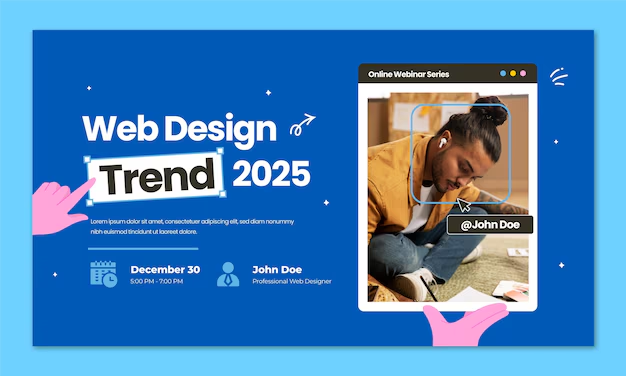Creating a modern theme design that not only looks great but also converts visitors into customers or subscribers is crucial for any website. Whether you're a WordPress theme developer or a website owner, understanding the principles of design that drive user engagement can make a significant difference in your site's performance. In this guide, we'll walk you through the key elements to focus on when designing a modern theme that not only attracts visitors but also encourages them to take action.
1. Focus on User Experience (UX)
One of the most important aspects of designing a modern theme is prioritizing user experience (UX). A theme with a strong UX ensures that users can easily navigate your site, find the information they need, and complete actions like signing up for newsletters or making purchases. A good user experience builds trust and encourages users to stay longer on your site, increasing the likelihood of conversion.
Tips for Improving UX:
- Simplify navigation: Use a clean menu structure that guides users to key pages.
- Use clear CTAs: Place call-to-action buttons in visible areas and make them stand out with contrasting colors.
- Ensure mobile responsiveness: Test your theme on various devices to ensure a seamless experience across all screen sizes.
- Focus on speed: Optimize images, use caching, and minimize scripts to improve loading times.
2. Incorporate Modern Design Elements
To create a modern theme that converts, it’s essential to use current design trends that appeal to users. This includes flat design, minimalism, and the use of vibrant colors. Modern design elements make your website visually appealing and create a sense of professionalism that can increase user trust.
Popular Modern Design Elements:
- Flat Design: Focus on clean lines, solid colors, and simple shapes to create a sleek look.
- Minimalism: Keep the design clutter-free and use plenty of white space to draw attention to important content.
- Micro-Animations: Use subtle animations to guide users’ attention towards call-to-action buttons and other key elements.
- Gradient Colors: Add depth and visual interest to backgrounds and buttons using gradient color schemes.
3. Design for Conversion Optimization
Your theme should be built with conversion optimization in mind. This means strategically placing elements that encourage users to take action, such as signing up for a newsletter, making a purchase, or contacting your business. Conversion-focused design helps to create a sense of urgency and encourages users to take the next step.
Conversion-Optimized Design Tips:
- Use Social Proof: Include testimonials, reviews, or customer logos to build trust with new visitors.
- Create Urgency: Use countdown timers or limited-time offers to create a sense of urgency for purchasing.
- Highlight Benefits: Focus on the benefits of your products or services to show users what they will gain.
- Place CTAs Strategically: Position call-to-action buttons at the end of each section or near key pieces of content.
4. Integrate High-Quality Visuals
Images and videos are powerful tools in web design. They can convey messages quickly and evoke emotions that drive users to take action. Using high-quality visuals in your theme design can significantly enhance the overall look of your website and make it more engaging for visitors. However, it's crucial to ensure that these visuals are optimized for fast loading times to avoid slowing down your site.
Best Practices for Using Visuals:
- Use Custom Graphics: Create unique icons and illustrations that reflect your brand's identity.
- Include Explainer Videos: Video content can help explain complex products or services more effectively.
- Use Full-Width Background Images: Make use of high-resolution images as full-width headers to grab users' attention.
- Optimize Images for Speed: Use tools like TinyPNG to compress images without losing quality.
5. SEO-Friendly Design
Search engine optimization (SEO) is a critical component of any successful website. A well-designed theme should include SEO best practices to ensure that your site ranks well in search results, attracting more organic traffic. The more visitors you can bring to your site through search engines, the higher your chances of conversions.
Key SEO-Friendly Design Tips:
- Use Clean Code: Ensure your theme is built with clean, semantic HTML for better indexing by search engines.
- Include Schema Markup: Add schema markup to help search engines understand the content on your pages.
- Optimize for Speed: Faster websites rank higher in search engines, so focus on speed optimization.
- Use Proper Heading Tags: Structure your content with H1, H2, and H3 tags to improve readability and SEO.
6. Focus on Mobile-First Design
With mobile traffic surpassing desktop traffic, designing for mobile is no longer optional—it’s a necessity. A mobile-first approach ensures that your theme provides an excellent user experience on smartphones and tablets. This approach not only helps with SEO but also increases the likelihood of conversions from mobile users.
Mobile-First Design Tips:
- Simplify Navigation: Use a mobile-friendly menu to make navigation easier on smaller screens.
- Optimize Tap Targets: Ensure buttons and links are large enough to be easily tapped on touchscreens.
- Prioritize Speed: Use responsive images and optimize CSS for faster mobile loading.
- Use Responsive Design Tools: Test your theme on various screen sizes to ensure it adapts perfectly.
7. Test and Refine
No matter how well you design your theme, testing and refining it is crucial to ensure it performs well. A/B testing different layouts, CTAs, and design elements can help you determine what works best for your audience. Continuously improving your theme based on user feedback and analytics can help you maximize your conversion rates.
Tools for Testing and Refinement:
- Google Analytics: Monitor user behavior and find opportunities for improvement.
- Hotjar: Use heatmaps to see where users are clicking and which sections they are engaging with the most.
- A/B Testing Plugins: Use plugins like AB Testing for WordPress to compare different design variations.
- User Feedback: Collect feedback through surveys or feedback widgets to understand user preferences.
Conclusion
Creating a modern theme design that converts involves balancing aesthetics with functionality. By focusing on user experience, integrating modern design trends, and optimizing your theme for conversions, you can create a website that not only looks great but also drives results. Whether you're developing themes for your clients or building a website for your own business, following these best practices will ensure that your design attracts visitors and turns them into loyal customers.
Start designing your modern, conversion-focused theme today, and watch your website’s performance soar!

.avif)
.avif)


.avif)